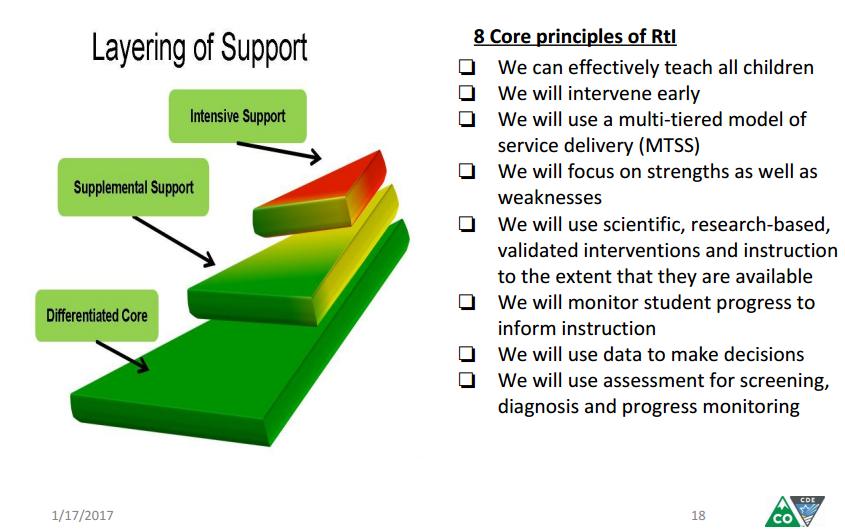Disability Identification Considerations
Accommodations, Interventions, Modifications, Oh My!
When you hear those three words "accommodations, interventions, modifications" what comes to mind?

Somehow those three words have attached themselves to negative connotations. We think something is wrong, and we need to accommodate, intervene, modify, but what if something is right, and we still need to accommodate, intervene, and modify? Such as the student who has accomplished all grade level expectations in their math lesson this week, or they have exceeded your expectations in your reading lesson. What do you do then? You have to make a program change to meet their needs - just like the child who might need the remediation.
Consider this:

If you look at the image on the left side of the screen, that is the RtI triangle lying flat on its back. If it was standing up you would see the distinct layers of tiered instruction: green (tier one - universal), yellow (tier two - supplemental), and red (tier three - intensive). When they are lying on their back you can see how the layers of instruction blend together and might be flexible for students. For instance, every child, every day should be receiving universal instruction (tier one) - this is grade level expectations that every child needs to master. If the child has mastered the universal instruction, OR if they need some extra time to master the universal instruction, you will move the child into a tier two frame. What this means is an adjustment will happen for this child that is more targeted instruction for their personalized needs--this could be seen as an accommodation, intervention, or modification. While they are receiving THEIR targeted instruction, they will also be receiving some universal instruction along the way so that they don't loose touch with what is happening in class. If they master their tier 2 instruction, OR need even more time with the skills, then the child moves to tier three support but notice how there is still green (universal) and yellow (supplemental) mixed in with the red (intensive.) This needs to be a fluid process for students and teachers because from day to day, hour to hour, minute to minute, you might have to adjust the student's level and intensity of instruction.
So, what does the student need?
Accommodations:
Interventions:
Modifications:
Modifications are generally made for students with significant cognitive or physical disabilities. Allowing a study to do fewer problems on a test would be a modification. A modification is a change in the course of study, standards, test preparation, location, timing, scheduling, expectations, student response and/or other attributes which provide access for a student with a disability to participate in a course, standard or test. It does fundamentally alter or lower the standard or expectation of the course, standard or test.
For more examples see HERE (optional).